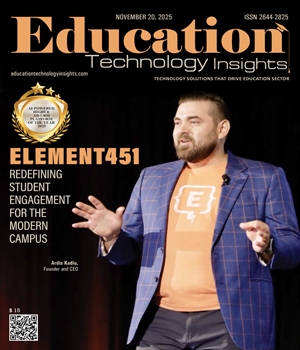THANK YOU FOR SUBSCRIBING
Be first to read the latest tech news, Industry Leader's Insights, and CIO interviews of medium and large enterprises exclusively from Education Technology Insights
Can The Lms Be Saved? Implementing An Equity-Minded Approach To Utilizing Learning Management Systems
Michael J Forder, Director of E-Learning - College of Health Professions, Virginia Commonwealth University
 Michael J Forder, Director of E-Learning - College of Health Professions, Virginia Commonwealth University
Michael J Forder, Director of E-Learning - College of Health Professions, Virginia Commonwealth UniversityLearning Management Systems (LMS) are touted for their ability to establish order and consistency within and among courses. So pervasive are these systems that universities often have three in place: the current LMS, the old LMS that is somehow still in use, and the unofficial LMS used in a handful of rogue courses. While the LMS is intended to serve as a digital framework for learning experiences to be built upon, it can come to define the nature and tenor of a course, much the way that PowerPoint has become synonymous with presentations. The ubiquity of the LMS and its influence on course culture raise student equity and academic intent concerns.
LMS critics argue that these systems engender a state of student mistrust. They warn that the LMS is designed to produce grades and discipline students when they step outside a narrow learning pathway. Indeed, it is hard to justify how features that track student time in the LMS, rank and compare peers, and automate penalties for late work support individual learners. In the push for standardization, the focus on student well-being and educational growth is lost.
These criticisms are valid, but the culprit is not necessarily the LMS itself. The LMS is a tool. While not an absolute, tools operate from a position of neutrality. How we choose to use a tool informs its position. Stripping back the policies, practices, and default settings that color how we experience an LMS reveals a more unbiased platform on which learning can be built. It is here where we can reshape the LMS into an infrastructure that promotes rather than restricts student equity.
"Several Actions Should Be Considered In An Effort To Center The Lms On Student Equity"
Consider grading and assessment practices. The LMS may come with a default point system and suggestion for assignment structures, but this is not foundational to how the tool must be used. What if the default assignment settings included unlimited attempts, no point values, and multiple accepted submission types? Even more radical, what if the gradebook was removed entirely? Is it necessary? Does it do harm? Similarly, the learning pathways set in place in courses are built by instructors and not into the system itself. Imagine a course site where students create their own learning pathways, exploring topics of interest and taking advantage of support resources most relevant to them? An LMS formatted in this manner places the student learning experience as the top priority, while simultaneously deemphasizing authoritative control practices. This equity-minded approach personalizes learning for each student, but it can only be achieved if the rigid default settings of the LMS are turned off. If this is the environment we want for students, then how can we recalibrate the LMS to support this world?
Several actions should be considered in an effort to center the LMS on student equity. Institutions can develop policy and guidance around the intended use of the LMS, particularly focusing on monitoring actions that promote a sense of student mistrust. LMS structure should be kept to a minimum. The course default should be as open as possible to allow instructors to craft experiences that benefit their students. Further, course designers and instructors can develop course structures with the student in mind. As each page and task is constructed, look at it from the student viewpoint. What does it feel like to you? Lastly, the LMS must be malleable. Embracing universal design for learning as a practice, the LMS and courses built within it must be agile and adaptive. Student feedback should be collected often and used to inform changes in course design, class policy, and the use of the LMS. These changes should be made during the semester to benefit students currently in the class, not just those in future terms.
The LMS can be positioned to do harm, particularly to those students from traditionally marginalized populations. However, despite the clouded history, the LMS is not intrinsically evil. Actions can be taken, both at the administrative and instructor levels to position the LMS to support learning for all. It is a tool. How will we decide to use it?
Read Also
Designing Learning that Transforms and Fosters Change
Stop Chasing Interesting. Start Choosing Impact.
Leading with Purpose to Strengthen Campus Belonging
Achieving Educational Excellence through Meaningful Engagements
Beyond Administration: How a School Management System Transforms Learning Communities
Empowering Educators through Purposeful, Connected and Transformative Learning

I agree We use cookies on this website to enhance your user experience. By clicking any link on this page you are giving your consent for us to set cookies. More info





















